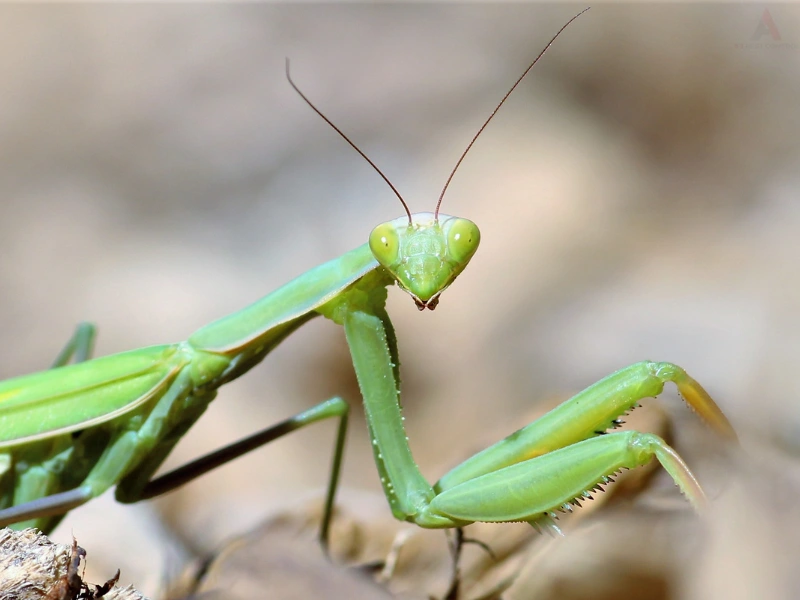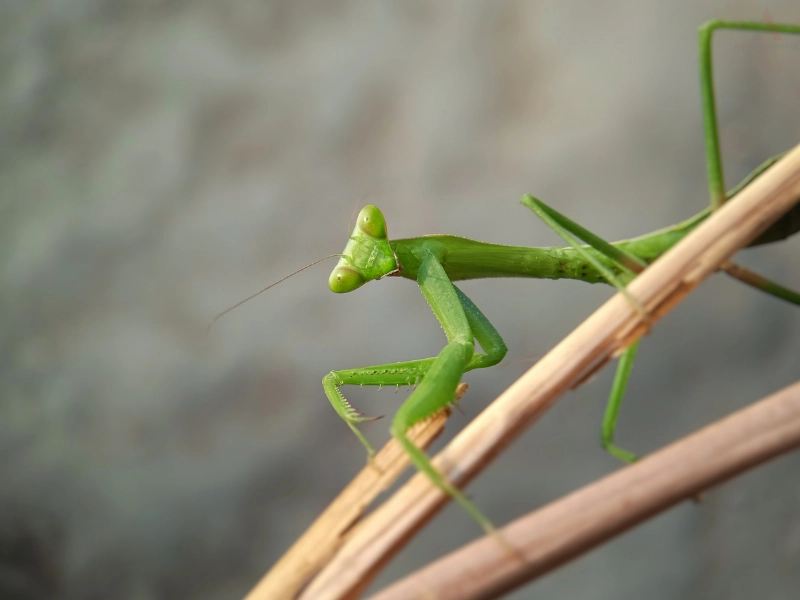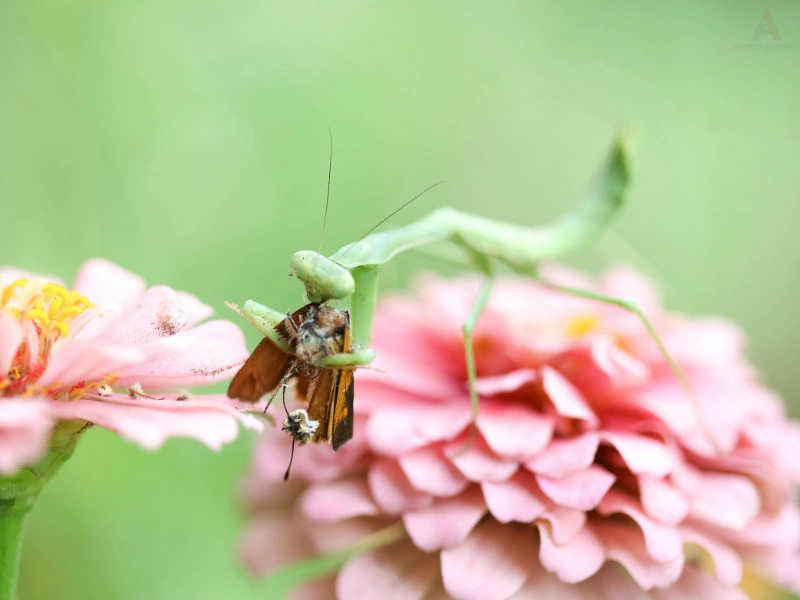
The Benefits of Praying Mantises: Are They Good for Gardens?
Chances are you’ve spotted a praying mantis perched on a leaf or in your garden, motionless, front legs folded and seemingly serene. While their calm stance might make them look peaceful, these remarkable insects are fierce hunters and one of nature’s best allies for pest control.
At A-1 Pest Control, our pros have seen first hand the benefits of praying mantis can bring to your yard. From how to attract them to your yard to just how much of a difference they can make, we're exploring the many benefits of praying mantis, answering whether or not are praying mantis good for gardens, and more in this article.
Table of Contents
What Is a Praying Mantis?
Before we dive into the benefits of praying mantis and answer whether or not are praying mantis good for gardens, let's be clear on what the praying mantis looks like as it's sometimes confused with a stick bug or grasshopper. The praying mantis (scientific name Mantis religiosa) is a medium-sized, carnivorous insect found across North Carolina and much of the world. Its name comes from its signature posture — bent front legs held upright in a position that looks a bit like prayer.

In our area, the Carolina mantis (Stagmomantis carolina) is most common, though you might also encounter the Chinese mantis (Tenodera sinensis) or European mantis (Mantis religiosa). These species vary slightly in size and color, from bright green to brown or even gray, helping them blend perfectly with their surroundings.
Known as ambush predators, mantises wait patiently among leaves and tall grasses before striking at lightning speed when prey wanders too close.
Benefits of Praying Mantis in Your Garden
The benefits of praying mantis go beyond pest control—they help keep your garden healthy without harmful chemicals. From eating aphids and caterpillars to reducing the need for sprays, the benefits of praying mantis make them a gardener’s ally.
Natural and Organic Pest Control
Mantises are voracious eaters. They prey on a variety of insect pests that damage crops, flowers, and shrubs, including:
- Aphids
- Flies
- Caterpillars
- Grasshoppers
- Moths
- Beetles
- Crickets
- Spiders

Part of a Healthy Ecosystem
By keeping insect populations in check, the benefits of praying mantis help support a thriving and diverse garden ecosystem. While they hunt pests, mantises also serve as a food source for small birds, frogs, and reptiles— a thriving population of mantises is a sign of a balanced and healthy environment.
Praying Mantis Behaviors
Praying mantises are found on every continent except Antarctica. In North Carolina, they favor gardens, meadows, and areas with plenty of vegetation where they have their pick of prey.
They prefer spots with tall grasses, shrubs, or flowering plants that provide cover for ambushing prey.
Baby Mantises and Egg Cases: A Seasonal Cycle
In late summer, female mantises create multiple egg sacs that attach to twigs or plant stems. When nymphs hatch in early spring, they begin hunting almost immediately.
These baby mantises grow rapidly through several molting stages before reaching adulthood in late spring or summer. While they have a relatively short lifespan, their annual life cycle ensures a steady renewal of these helpful garden
If you spot these foamy, tan-colored egg sacs in your garden, leave them undisturbed — each one can contain hundreds of future pest-fighting helpers.
Mantis Camouflage
Mantises are masters of disguise. Their coloring often matches the plants or branches they rest on, allowing them to blend seamlessly into their surroundings. This camouflage helps them hunt effectively while staying hidden from natural predators like birds and frogs.
How to Attract Praying Mantises to Your Garden
If you want these beneficial insects working for you, here’s how to create an inviting space for them.
Grow Plants That Attract Praying Mantises
Certain plants are known to attract mantises by offering shelter and a steady supply of prey. Try growing marigolds, dill, fennel, Angelica, or Raspberry canes. These plants not only draw mantises but also appeal to other beneficial insects, like ladybugs and bees.
Create Shelter and Shade
Mantises need hiding spots to ambush prey and avoid predators. Low, leafy plants, tall grasses, and shrubs offer the perfect cover.
Avoid Chemical Pesticides
Using chemical sprays can kill mantises or drive them away by eliminating their food supply. If possible, rely on natural pest control and biological balance.
Add a Water Source
A shallow dish of water or damp mulch can provide humidity and hydration, especially during hot North Carolina summers.
Are Praying Mantises Safe to Have Around?
Yes, it’s good to have praying mantis around your house or garden. They don’t bite humans, sting, or spread disease. You can even hold them gently if you’re careful, though they might mistake a finger movement for prey and give a harmless pinch.
Their calm demeanor and slow, deliberate motions make them fascinating to observe — especially for kids learning about nature.
The Downside of Praying Mantises
While the benefits of praying mantis populations are undeniable, they’re not without drawbacks:

- They’re not selective hunters. Mantises will eat beneficial insects too, including bees and butterflies, if given the chance.
- Non-native species like the Chinese mantis can sometimes outcompete native Carolina mantids for food and space.
- Plus, they can’t manage large infestations alone. For serious pest problems, you’ll still need professional pest control.
Despite these minor downsides, mantises remain a crucial part of natural pest management in gardens and farms. Wondering what other pests provide some positive benefits? Read our recent blog on how spiders are actually good (sometimes)!
Frequently Asked Questions: Praying Mantises
Are praying mantis good for gardens?
Wondering, “are praying mantis good for gardens?” They are! Praying mantises can be great for gardens because they naturally control pests like aphids, beetles, and caterpillars without the need for chemicals. However, they’re indiscriminate hunters and will also eat beneficial insects such as bees and butterflies. For best results, keep a balanced ecosystem and avoid overpopulating your garden with mantises.
What are praying mantises good for?
Praying mantises are beneficial predators that help control garden pests like aphids, caterpillars, and flies. They support a natural, chemical-free approach to pest management while adding fascination to your garden. Just remember, they’ll eat any insect they can catch, including some helpful ones.
Where do praying mantises live?
Praying mantises live in warm, temperate, and tropical regions around the world, often in gardens, meadows, shrubs, and forests. They prefer areas with plenty of vegetation where they can hunt and lay their eggs. You can also attract them to your garden by providing tall plants and undisturbed spaces.
What plants attract praying mantis the most?
Praying mantises are attracted to plants that provide shelter and hunting grounds, such as tall grasses, flowering herbs, and shrubs. Plants like parsley, dill, fennel, and marigolds are especially appealing because they draw other insects, giving mantises plenty of food. Leaving some areas of your garden a bit wild also helps them feel at home.
Is it safe to hold a praying mantis?
Yes, it’s generally safe to hold a praying mantis, as they are harmless to humans and don’t bite aggressively. Be gentle, support their body, and avoid sudden movements to prevent stressing them. Remember, they are delicate insects, so treat them carefully to keep them safe.
What is the downside of praying mantis?
The main downside of praying mantises is that they’re indiscriminate predators—they’ll eat beneficial insects like bees, butterflies, and ladybugs along with pests. They can also reduce local insect diversity if too many are introduced. Essentially, while helpful, they work best as part of a balanced garden ecosystem, not as the sole method of pest control.
Don’t Rely on Mantises Alone for Pest Control
While the praying mantis certainly has many benefits, they can’t act as a substitute for professional pest control. Having a Praying Mantis presence is a great benefit, but the reality is even an army of them aren’t going to be able to take care of a major infestation. For that, you’ll need a professional pest control company, and A-1 Pest Control is here to help. We offer prevention and elimination services for the following pests identified in this post:
- Mosquito control
- Rodent control
- Bird control
- Wildlife control (including snakes)
To request a FREE pest inspection, call us today at 828-481-9140 or fill out the form below to schedule. We help residential homeowners and commercial businesses across Western North Carolina including Lenoir, Mooresville, Hickory, Blowing Rock, West Jefferson, and Hendersonville and surrounding areas.
Schedule Your Free Inspection
Complete the form to schedule your no obligation estimate with A-1 Pest Control.
"*" indicates required fields
